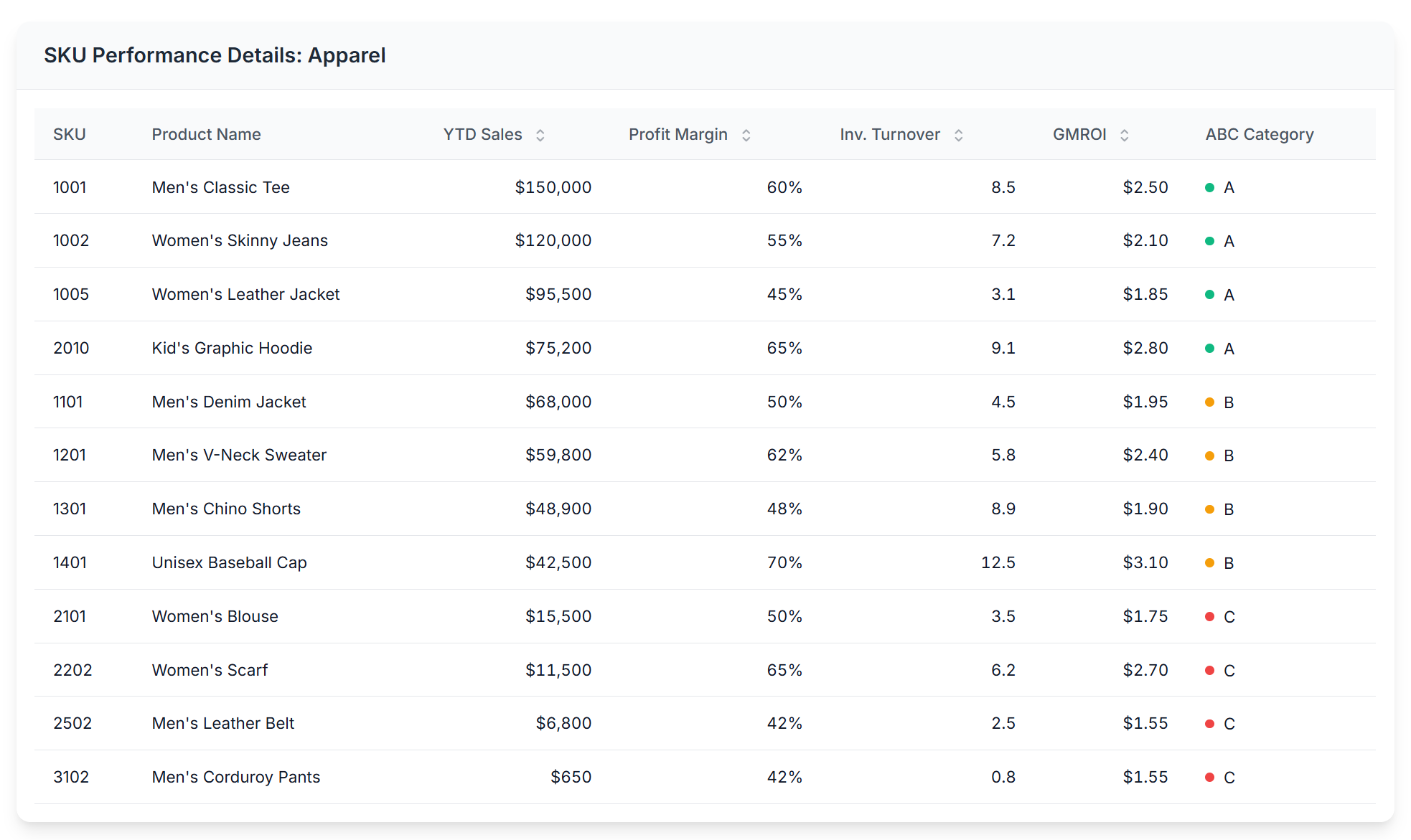Ever feel like you're drowning in a sea of products? You're not alone. In the fast-paced world of retail, a sprawling product catalog can quickly morph from a competitive advantage into a logistical nightmare. This is where the powerful duo of SKU rationalization and assortment planning becomes a retailer's best friend. It's the art and science of curating a product mix that not only delights customers but also supercharges your bottom line.
For too long, these critical functions have been relegated to a maze of disconnected spreadsheets. While familiar, this manual approach is a breeding ground for data silos, costly errors, and a frustrating lack of real-time insight. The result? Unsold inventory, shrinking margins, and missed growth opportunities.
This guide will illuminate a path forward, taking you from the foundational principles of SKU rationalization and assortment planning to a practical, implementable strategy. We'll explore how to break free from the limitations of spreadsheets and embrace a more intelligent, integrated approach to planning that drives real results.
SKU (Stock Keeping Unit) rationalization is the disciplined process of analyzing your product portfolio to identify and phase out underperforming items. Think of it as a strategic decluttering of your inventory. It’s not about arbitrarily slashing your product count, but rather making data-driven decisions to eliminate items that are no longer pulling their weight. Industry reports suggest that retailers who master this process can see significant inventory reduction, often in the range of 10-15%, and a corresponding lift in profit margins.
The rewards of a well-executed SKU rationalization strategy are substantial:
If SKU rationalization is about strategic subtraction, assortment planning is about intelligent addition and optimization. It's the process of meticulously selecting the right blend of products for each of your stores and channels. A winning assortment plan ensures you have the right products, in the right quantities, at the right locations, and at precisely the right time.
The ripple effects of a strong assortment plan are felt across the business:
Transitioning from theory to tangible results requires a structured, step-by-step approach. Here’s a practical guide to implementing SKU rationalization and assortment planning, complete with illustrative examples of how your data could come to life in a modern planning tool.
Your first move is to consolidate all relevant data into a single, cohesive view. This is often where spreadsheet-based processes begin to crumble. The manual, error-prone task of cobbling together data from your ERP, POS system, e-commerce platform, and supply chain applications is a recipe for unreliable analysis.
Imagine a workbook with a dozen tabs, each a static snapshot from a different system. The VLOOKUPs alone are enough to induce a headache, let alone the inevitable data entry errors.

The modern alternativeis to have a contemporary planning platform like Lumel EPM that can establish direct, live connections to your various data sources, including modern data platforms like Snowflake, Databricks, BigQuery, or Microsoft Fabric. This creates a single source of truth, eliminating the soul-crushing manual work and ensuring your analysis is based on fresh, accurate data.
With your data unified, it's time to put each SKU under the microscope. Key performance indicators (KPIs) to analyze include:
A classic and effective framework for this analysis is ABC analysis, which segments products based on their revenue impact:
Spreadsheet Preview: SKU Performance Dashboard

While the numbers are crucial, they don't always paint the full picture. A low-selling SKU might be a "loss leader" that drives traffic or a key component of a popular product bundle. To make more sophisticated decisions, a decision-making matrix that balances quantitative data with qualitative factors is invaluable.
Consider these dimensions:
Spreadsheet Preview: SKU Rationalization Matrix

With a leaner, more profitable current assortment, your focus can shift to building the ideal product mix for the future. This is where forecasting takes center stage.
Spreadsheet Preview: Assortment Plan by Store Cluster

As you've seen, while spreadsheets can get you started, they quickly become a bottleneck to growth. The volume, velocity, and variety of data in modern retail demand a more robust and intelligent solution.
This is precisely where Lumel EPM transforms the game for retailers. Lumel EPM empowers you to leapfrog the limitations of spreadsheets and adopt a truly data-driven, strategic approach to SKU rationalization and assortment planning.
Here’s how Lumel EPM empowers you to excel:
In today's hyper-competitive retail environment, a meticulously optimized product assortment isn't just a "nice-to-have" – it's a fundamental pillar of success. By graduating from the constraints of spreadsheets and embracing a modern, integrated planning solution like Lumel EPM, you can elevate your SKU rationalization and assortment planning from a reactive, tactical chore to a proactive, strategic powerhouse.
Ready to unlock the hidden potential within your product portfolio and architect a more profitable future? It’s time to leave the spreadsheet chaos behind and embrace a smarter, more strategic way to plan.
Lumel enables retailers to move beyond fragmented spreadsheets into a unified, intelligent planning environment. Empower your team to make faster, smarter, and more profitable decisions with data-driven SKU rationalization and assortment planning. The firm was recognized as the Best Overall Vendor for EPM in 2025.
To follow our experts and receive thought leadership insights on data & analytics, register for one of our webinars. To learn how Lumel Enterprise Performance Management (EPM) supports new product introductions, reach out to us today.